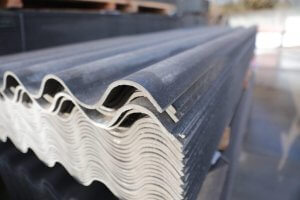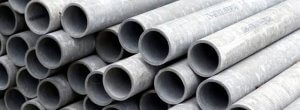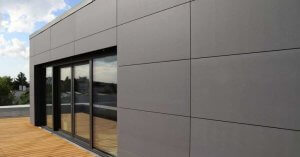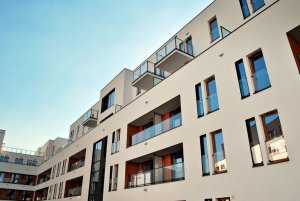The Benefits of Using Fiber Cement Siding

In this article, we’re going to tell you about the many benefits of using fiber cement siding for building exteriors. It’s a super versatile material that you can use in all kinds of ways. It’s made of cement, wood pulp, and other minerals. That combination of ingredients makes for a much lighter exterior wall material.
As if that weren’t good enough, it’s also inflammable and water-resistant. You can use fiber cement siding to create building facades with lots of different textures, colors, and tones.
Fiber cement panels are easy to manage and not hard to put holes in. That makes it easy to create light walls out of them. This material is also a great option in terms of insulating buildings from sound and temperature.
It’s important to remember that this material allows you to create whatever look you want. You can install it in a way that the divisions are exposed for a kind of building-block look, for example. Or, you can make it into a single surface with invisible divisions.
What is fiber cement?

Fiber cement is basically a construction material. It’s a mixture made from a cement or calcium silicate base. In order to strengthen the mixture, manufacturers add organic fibers, minerals, and/or synthetic fibers.
Originally, manufacturers used asbestos to reinforce the fiber cement mixture. But once it came to light that asbestos could lead to serious health problems, it went out of use. Nowadays, manufacturers are using wood pulp, glass, and vinyl instead.
It’s also common to see fiber cement as the material for water pressure pipes, drainage pipes, and sewage systems. You can also see it frequently in water reservoirs and chimneys.
The benefits of using fiber cement siding- features

There are lots of different uses for fiber cement, though siding for building exteriors is one of the most common. It’s becoming a more and more popular choice because of how cheap it is.
Because of that small price tag, it’s especially popular for everything from sheds, to warehouses, to industrial complexes. Fiber cement sheets can come in either flat or corrugated form.
You can also find the sheets in many different sizes. This makes it a great option for ridges, skirts, and edging. We also want to remind you that when you’re picking out a type of fiber cement, you need to make sure it doesn’t have asbestos.
You install fiber cement siding through hooks and special screws that fit into the structure. But like we mentioned before, you may also see fiber cement in tube form, or as connecting pieces. In other words, you can make it so that the entire structure holding it up is also fiber cement.
Another amazing characteristic of this material is that you can reuse the sheets. That being said, they are relatively fragile, so this isn’t often the case. They tend to wear down a bit in the process of putting them up and then taking them down.
Pipes made with this material have high-quality cement, silica, and organic fibers. That mixture of materials is a guarantee that the pipes will be strong and tough.
Fiber cement is a material that can handle sudden, drastic changes in temperature.
Benefits of fiber cement siding – different types
Durock

Durock panels are rectangular and about 13 millimeters (.5 inches) thick. The base of this mixture is Portland cement, which the company then adds some extra elements to. They also have a fiberglass mesh that acts as further support.
In general, people use these panels to cover up joints and leave the surface ready to be coated with plaster or paint.
Superboard

These are flat sheets of fiber cement made at high pressure and high temperatures, and with moisture in a process known as “autoclave.” Builders use these for exterior walls because of how resistant they are to anything the climate can throw at them.
Permabase

These sheets are also made with Portland cement and fiberglass mesh. The final product is very light but extremely hard and tough. Because of the mixture of materials, they’re water-resistant and won’t swell up or change shape at all.
The benefits of fiber cement siding

As we’ve mentioned, one of the major benefits of this material is how much cheaper it is than others. This is why it’s becoming so common in industrial building projects.
Because they’re resistant to water, humidity, and low temperatures, fiber cement siding sheets can also last a long time.
As far as maintenance goes, the big thing to know is that this material doesn’t warp or lose its color. It’s very easy to maintain, and won’t cause you lots of problems.
Another thing we’ve mentioned a few times is how light this material is. That makes it especially easy to maneuver and transport.
Fiber cement is a highly sustainable building material and is inflammable, and impervious to mold, salt, and termites. It can also help you insulate your home against both sound and temperature.
The fact that it will provide that insulation won’t just give you comfort, though. It will also help you save a lot on your energy bills.
We could go on and on, but we think you get the idea. Give fiber cement siding a try. You’ll be able to create whatever look you want with this amazing material.
It’s no surprise that this high-quality material is becoming a popular construction material. Not only is it versatile, but you can also use it to renovate and reconstruct older buildings and industrial complexes.
In this article, we’re going to tell you about the many benefits of using fiber cement siding for building exteriors. It’s a super versatile material that you can use in all kinds of ways. It’s made of cement, wood pulp, and other minerals. That combination of ingredients makes for a much lighter exterior wall material.
As if that weren’t good enough, it’s also inflammable and water-resistant. You can use fiber cement siding to create building facades with lots of different textures, colors, and tones.
Fiber cement panels are easy to manage and not hard to put holes in. That makes it easy to create light walls out of them. This material is also a great option in terms of insulating buildings from sound and temperature.
It’s important to remember that this material allows you to create whatever look you want. You can install it in a way that the divisions are exposed for a kind of building-block look, for example. Or, you can make it into a single surface with invisible divisions.
What is fiber cement?

Fiber cement is basically a construction material. It’s a mixture made from a cement or calcium silicate base. In order to strengthen the mixture, manufacturers add organic fibers, minerals, and/or synthetic fibers.
Originally, manufacturers used asbestos to reinforce the fiber cement mixture. But once it came to light that asbestos could lead to serious health problems, it went out of use. Nowadays, manufacturers are using wood pulp, glass, and vinyl instead.
It’s also common to see fiber cement as the material for water pressure pipes, drainage pipes, and sewage systems. You can also see it frequently in water reservoirs and chimneys.
The benefits of using fiber cement siding- features

There are lots of different uses for fiber cement, though siding for building exteriors is one of the most common. It’s becoming a more and more popular choice because of how cheap it is.
Because of that small price tag, it’s especially popular for everything from sheds, to warehouses, to industrial complexes. Fiber cement sheets can come in either flat or corrugated form.
You can also find the sheets in many different sizes. This makes it a great option for ridges, skirts, and edging. We also want to remind you that when you’re picking out a type of fiber cement, you need to make sure it doesn’t have asbestos.
You install fiber cement siding through hooks and special screws that fit into the structure. But like we mentioned before, you may also see fiber cement in tube form, or as connecting pieces. In other words, you can make it so that the entire structure holding it up is also fiber cement.
Another amazing characteristic of this material is that you can reuse the sheets. That being said, they are relatively fragile, so this isn’t often the case. They tend to wear down a bit in the process of putting them up and then taking them down.
Pipes made with this material have high-quality cement, silica, and organic fibers. That mixture of materials is a guarantee that the pipes will be strong and tough.
Fiber cement is a material that can handle sudden, drastic changes in temperature.
Benefits of fiber cement siding – different types
Durock

Durock panels are rectangular and about 13 millimeters (.5 inches) thick. The base of this mixture is Portland cement, which the company then adds some extra elements to. They also have a fiberglass mesh that acts as further support.
In general, people use these panels to cover up joints and leave the surface ready to be coated with plaster or paint.
Superboard

These are flat sheets of fiber cement made at high pressure and high temperatures, and with moisture in a process known as “autoclave.” Builders use these for exterior walls because of how resistant they are to anything the climate can throw at them.
Permabase

These sheets are also made with Portland cement and fiberglass mesh. The final product is very light but extremely hard and tough. Because of the mixture of materials, they’re water-resistant and won’t swell up or change shape at all.
The benefits of fiber cement siding

As we’ve mentioned, one of the major benefits of this material is how much cheaper it is than others. This is why it’s becoming so common in industrial building projects.
Because they’re resistant to water, humidity, and low temperatures, fiber cement siding sheets can also last a long time.
As far as maintenance goes, the big thing to know is that this material doesn’t warp or lose its color. It’s very easy to maintain, and won’t cause you lots of problems.
Another thing we’ve mentioned a few times is how light this material is. That makes it especially easy to maneuver and transport.
Fiber cement is a highly sustainable building material and is inflammable, and impervious to mold, salt, and termites. It can also help you insulate your home against both sound and temperature.
The fact that it will provide that insulation won’t just give you comfort, though. It will also help you save a lot on your energy bills.
We could go on and on, but we think you get the idea. Give fiber cement siding a try. You’ll be able to create whatever look you want with this amazing material.
It’s no surprise that this high-quality material is becoming a popular construction material. Not only is it versatile, but you can also use it to renovate and reconstruct older buildings and industrial complexes.







